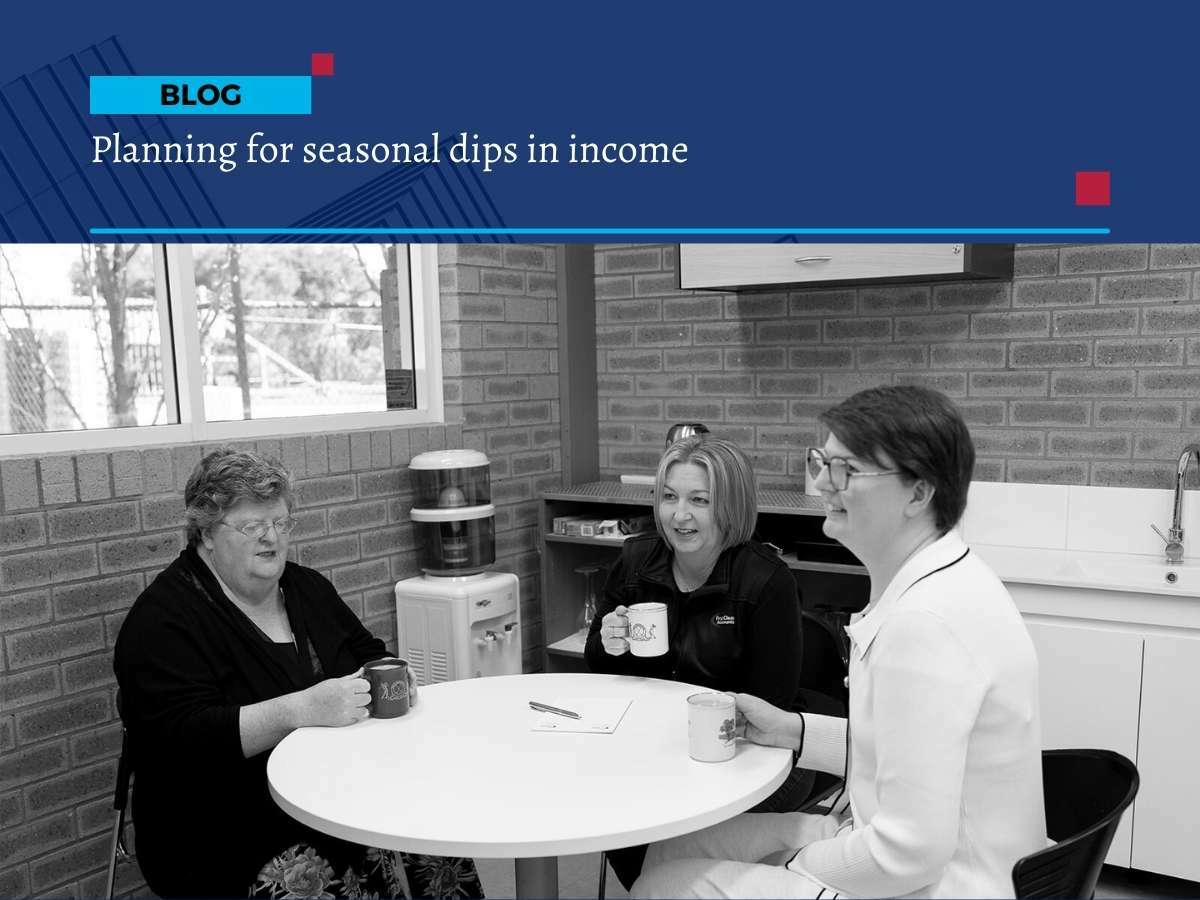
Planning for seasonal dips in income
Planning for seasonal dips in income
Seasonal dips in income can be highly challenging when you’re a small business. But there are proactive ways to predict, plan for and overcome these dips in revenue.
The key to dealing with seasonal dips is to know when they’re most likely to occur, and to have measures in place to spread your income and revenue pipeline over the course of the year.
Understanding seasonality in your sector
If your business is seasonal such as pool supplies, or a ski gear specialist, you’ll be used to the peaks and troughs, but many 'non-seasonal' businesses experience times during the financial year where sales and revenue peak – and, on the flipside, where sales and revenue experience a pronounced dip.
When income is low at certain times of the year, it makes for challenging times. First Class Accounts Ovens & Murray can assist by analysing your business's financial history to pinpoint these peaks and troughs. Our expertise in management accounting provides insights that help you understand your sector’s unique seasonality and prepare for it.
So, what are the key ways to plan for this kind of seasonality?
Forecast your seasonality
It’s vital to know WHEN you’re most likely to experience any seasonal dips. Looking at bench-marking reports for your industry is one way to predict the seasonality in your niche or sector. But you can also use your own accounting data to great effect. Look back through your profit & loss reports and spot where the peaks and troughs have occurred over preceding years.
First Class Accounts Ovens & Murray offers forecasting services to help you assess this historical data. With our support, you can anticipate and prepare for quieter periods, ensuring that your financial planning is well-informed and tailored to your business.
Charge a premium in peak time
One straightforward approach is to apply premium pricing for your products/services during the busy season. By increasing your pricing, you boost your overall revenue, giving you more working capital to see you through the leaner months when sales and income are at their lowest.
Our team can work with you to develop a pricing strategy that aligns with your cash flow needs, helping you make the most of high-demand periods while securing funds to navigate slower months.
Offer additional peak-time services
Offering added extras and other additional service lines during peak time is another way to maximise the season. In the months where customers are most engaged, look to upsell these premium services and offer more value. Satisfied clients will be more inclined to pay for added extras, giving you an increased revenue stream from the same number of customers.
We can help identify and structure these peak-time offerings, ensuring you’re positioned to maximise revenue during high-demand times.
Target other markets
Exploring other related markets is another useful tactic. When you’re experiencing downtime, look for other ways to monetise your existing assets, products or services. For example, if you’re a hotel where sales peak in summertime, offer discounted conference space in the winter months to boost revenue.
Diversify your products/services
If one product/service has a known seasonal dip, look at adding an additional product or service to offset this downtime. For example, a a ski resort could promote bike-riding or hiking breaks during the warmer summer months to keep revenue constant. Likewise a pool maintenance firm could establish an outdoor fireplace business for the colder months.
Have a regional e-commerce strategy
If you’re dependent on a small local market, broadening your marketing and e-commerce strategies can help to attract a wider customer base – and bolster sales. Paid advertising through Facebook, LinkedIn or Twitter can easily target new geographical markets, bringing in new customers and giving your revenue a much-needed uplift during seasonal troughs.
Talk to us about planning for seasonality
If your business is struggling with seasonal dips, and the resulting impact on cashflow, come and talk to us. We’ll help you identify the timing of your seasonal downtime, and come up with a clear strategy for stabilising your income across the year.








